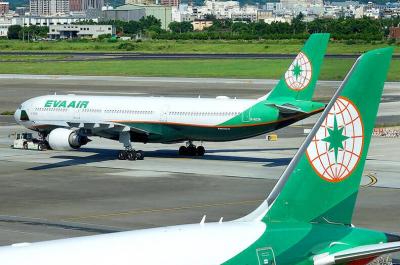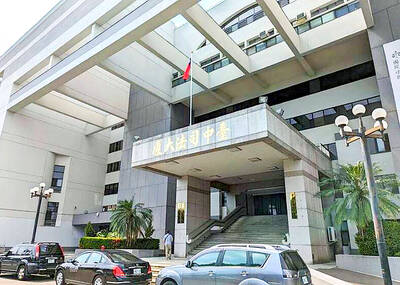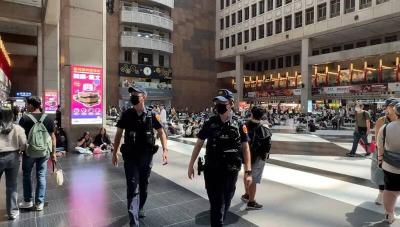Taipei Municipal Wanfang Hospital has developed a device that can help patients on dialysis detect stenosis at home in 20 seconds, Taipei Medical University (TMU) said on Saturday.
Wanfang is one of the six affiliated hospitals of the TMU Healthcare System.
TMU displayed the non-invasive arteriovenous fistula stenosis detection device, developed by Wanfang Hospital cardiologist Chen Wei-ta (陳威達) and a team at Above Care Inc, at this year’s Taiwan Healthcare Expo, which was held at the Taipei Nangang Exhibition Center from Thursday to Sunday.
Taiwan has a kidney disease prevalence rate of about 12 percent, with nearly 100,000 people on dialysis, Chen said.
As many patients receive hemodialysis three times a week, stenosis — or abnormal narrowing of a blood vessel — or blockage can occur easily, but it is often checked only once in three months due to insufficient examination equipment, he said.
Chen and the Above Care team developed the artificial-intelligence (AI)-based non-invasive system to help patients detect stenosis and seek treatment earlier.
It works by placing the small device on a patient’s skin to record the sound of blood flow and upload it to a cloud platform, which is automatically examined by AI.
The process takes only about 20 seconds, and the diagnosis accuracy rate is about 90 percent, Chen said.
The device is easy to operate and causes no pain — much like using a home blood pressure monitor, he said.
It is also capable of predicting changes to the arteriovenous fistula, such as when stenosis occurs, from the sound of the blood flow, he added.

The first global hotel Keys Selection by the Michelin Guide includes four hotels in Taiwan, Michelin announced yesterday. All four received the “Michelin One Key,” indicating guests are to experience a “very special stay” at any of the locations as the establishments are “a true gem with personality. Service always goes the extra mile, and the hotel provides much more than others in its price range.” Of the four hotels, three are located in Taipei and one in Taichung. In Taipei, the One Key accolades were awarded to the Capella Taipei, Kimpton Da An Taipei and Mandarin Oriental Taipei. Capella Taipei was described by

EVA Airways today confirmed the death of a flight attendant on Saturday upon their return to Taiwan and said an internal investigation has been launched, as criticism mounted over a social media post accusing the airline of failing to offer sufficient employee protections. According to the post, the flight attendant complained of feeling sick on board a flight, but was unable to take sick leave or access medical care. The crew member allegedly did not receive assistance from the chief purser, who failed to heed their requests for medical attention or call an ambulance once the flight landed, the post said. As sick

The Taichung District Court yesterday confirmed its final ruling that the marriage between teenage heir Lai (賴) and a man surnamed Hsia (夏) was legally invalid, preventing Hsia from inheriting Lai’s NT$500 million (US$16.37 million) estate. The court confirmed that Hsia chose not to appeal the civil judgement after the court handed down its ruling in June, making the decision final. In the June ruling, the court said that Lai, 18, and Hsia, 26, showed “no mutual admiration before the marriage” and that their interactions were “distant and unfamiliar.” The judge concluded that the couple lacked the “true intention of

A drunk woman was sexually assaulted inside a crowded concourse of Taipei Railway Station on Thursday last week before a foreign tourist notified police, leading to calls for better education on bystander intervention and review of security infrastructure. The man, surnamed Chiu (邱), was taken into custody on charges of sexual assault, taking advantage of the woman’s condition and public indecency. Police discovered that Chiu was a fugitive with prior convictions for vehicle theft. He has been taken into custody and is to complete his unserved six-month sentence, police said. On Thursday last week, Chiu was seen wearing a white